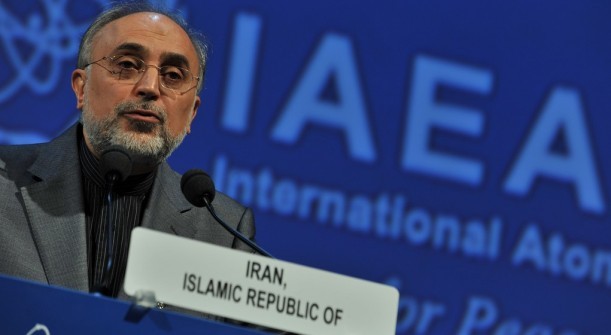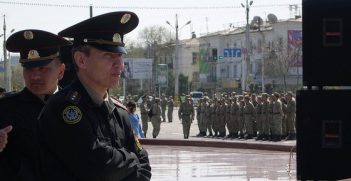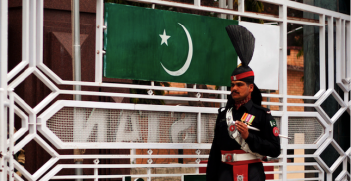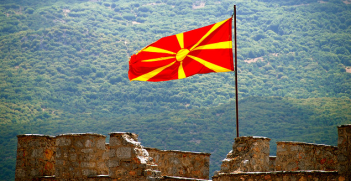An Iran Deal Could Become Even More Unattainable

Recent negotiations have highlighted difficulties of achieving a comprehensive agreement to end Iran’s nuclear program, reports Ramesh Thakur.
A comprehensive agreement to end Iran’s nuclear program in order to eliminate suspicions about possible weapons dimensions to the program as a condition of lifting sanctions on Iran is proving elusive. The original July deadline was extended to 24 November but all parties this week announced a second extension of the deadline to 1 March 2015 for a high-level political agreement, and confirmation of the full technical details of the agreement by 1 July. Meanwhile, Iran will be permitted to access $700 million a month in frozen assets.
Iran might have an interest in nuclear weapons because it lives in a particularly threatening environment that includes five nuclear-armed states (Israel, Pakistan, India, Russia, China). Non-Arab Shia Iran is also surrounded by a string of deeply hostile Sunni-ruled Arab regimes. Additionally, American ground troops and warships are deployed in large numbers in surrounding seas and territories. Britain and the US also have intervened repeatedly in Iran and have a record of almost unbroken bellicose rhetoric against the Islamic republic. The country’s nuclear program has been subjected to cyber-attacks by the Stuxnet computer worm.
In 2011, referring to Gaddafi, Iran’s Supreme Leader Ayatollah Ali Khamenei said: “this gentleman wrapped up all his nuclear facilities, packed them on a ship and delivered them to the West and said, ‘Take them!’… Look where we are, and in what position they are now.”
The acquisition of nuclear weapons by Iran would have a series of negative consequences for almost every component of the nuclear arms control agenda, from increasing pressures on other states in the regions and beyond to proliferate, to heightened risks of nuclear terrorism, use of nuclear weapons, and setbacks to efforts to cut global nuclear stockpiles and reduce their role and salience in national security doctrines.
There is no conclusive evidence that Iran ever actually tipped over into weapons production. IAEA reports have listed efforts by Iran’s military to procure nuclear related and dual use material and equipment; to develop ways and means of producing undeclared nuclear material; to tap into clandestine networks for obtaining weapons related information and documentation; and to work on an indigenous nuclear weapons design. But almost all these activities took place before 2003.
Efforts to negotiate a resolution of the standoff with Iran had made no substantive progress in 2012. But an opening was provided in September 2013 on the margins of the start of the annual session of the UN General Assembly. A “historic breakthrough” deal was announced in on 24 November 2013: an interim deal whereby Iran agreed to scale back its weapon-sensitive material and activities under IAEA oversight in return for some sanctions relief. In February 2014 the IAEA reported that Iran’s stockpile of uranium enriched to just under 20 per cent – just a short technical step away from weapon grade highly enriched uranium – had fallen to 161 kg from 196 kg in November: the first decline in four years. Iran’s 20 per cent-enriched uranium stockpile had fallen to half by mid-April.
If the West’s goal is to verifiably and irreversibly roll back Iran’s nuclear breakout capability, the quest is likely to prove futile. For reasons of security – history and geopolitics give both Iran and Israel a nightmarishly bad neighbourhood – as much as national pride, Iran will insist on maintaining material and infrastructure that give it some minimum capability to weaponise in future if necessary. Rather, the real challenge will be to widen the technological and detection gap between capability and weaponisation, to cap Iran’s capability at a point that provides the necessary reassurance to regional states and the international community by aligning the detection probability with the time required for effective international intervention to stop any attempted breakout. As George Perkovich comments, demanding zero enrichment from Iran makes zero sense. Rather, the international community’s focus should be on the timeframe of Iran’s capacity to make a nuclear weapon. The interim agreement became possible only after Washington shifted stance from “no enrichment” to “no bomb.”
The two sides remain apart on three sets of issues in particular. First, Iran wants to keep some 9,500 centrifuges while the P5+1 want the numbers cut back to between 4,000-4,500. (Originally Tehran wanted to keep all 19,000 centrifuges while the others had favoured fewer than 2,000). They may be able to settle on a compromise figure of 6,000. Given the low efficiency of Iran’s first-generation centrifuges, this number would impose a timeframe of 12 months for Iran to be able to reverse course and produce enough enriched uranium to make one bomb.
Second, sanctions relief so far have been limited, temporary and reversible. Iran wants all remaining sanctions lifted immediately on the conclusion of a deal while the others want a phased elimination over a ten-year horizon. While it is simple enough to lift sanctions, reinstating a dismantled sanctions architecture will be more problematical and could give Tehran a window of opportunity to proceed further down the weaponisation path. And third, Iran wants the deal to last for five years while the others want it to be for ten years.
The fear is that the negotiators may have let slip the most opportune moment for closing the deal. The Russia–West standoff over the Ukraine crisis could provoke Moscow into backing away from pressure on Tehran in retaliation for US and Western sanctions on Russia. Because of doubts about Iran’s good faith and other possible undeclared facilities beyond IAEA reach, critics in Israel, Saudi Arabia and the US have been spoiling to wreck the deal for allegedly putting Iran on the same path as led to North Korea’s eventual nuclear breakout. Hardliners in Tehran could mobilise opposition to any further concessions. And from January the Republicans will be in control of both houses of the US Congress.
Professor Ramesh Thakur is a former UN Assistant Secretary-General and Director of the Centre for Nuclear Non-Proliferation and Disarmament, Australian National University.





